Complete Guide to Grow Romanescu: a magical crop?
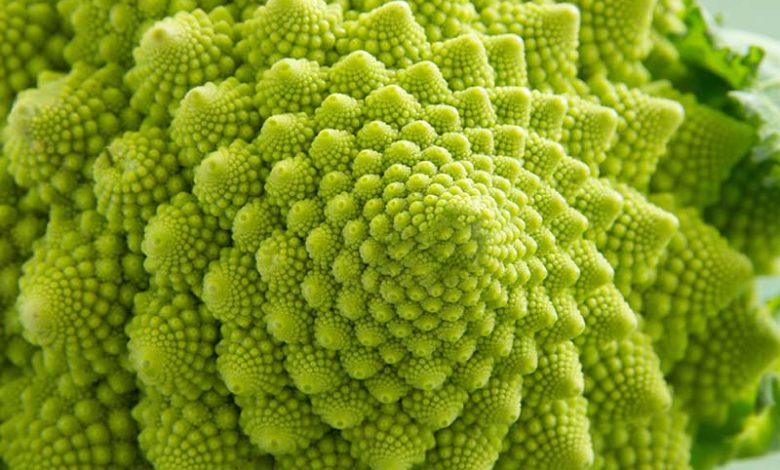
Hello to all agrohuerters! In today’s article we are going to learn how to grow romanescu organically. In addition, we will see when is the best time to sow and plant romanescu. We will mention in a general way what are the main pests and diseases of romanescu and we will discover all the secrets that this crop keeps, one of the best examples of fractals in nature.

What is romanescu or romanesco?
The Romanescu or Romanesco belongs to the Brassicaceae family and is a variety of Italian cauliflower. It is not yet very well known in Spain, but little by little it is beginning to be cultivated more for all the beneficial qualities and properties of Romanescu.
Properties of romanescu
The romanescu is well known for all the properties it possesses. Some of these properties that the romanescu can provide us are:
- Of all the varieties of cauliflower, it is the one with the most vitamin C.
- It is rich in potassium, phosphorus, folic acid and carotenoids
- Romanescu is a good source of fiber
- Also, it has very few calories.
How to cook romanescu?
This vegetable can be eaten raw or cooked. And you can prepare a lot of super delicious dishes. For example: romanescu with bechamel sauce and ham, romanescu with potatoes and alioli, romanescu with pine nuts, romanescu with tomato,… I also like romanescu cooked with a splash of olive oil.
Additionally, some people also eat the leaves of the romanescu. I haven’t tried the leaves yet, what about you?
Fractals in nature: romanescu’s fractal geometry
If we should highlight something about this crop, it is its characteristic structure known as « romanescu fractal geometry». This shape distinguishes it from other cauliflowers and is one of the magical things that nature creates.
These small green pyramids that form the romanescu inflorescences follow the Fibonacci series. That is, they always repeat the same form. We can take a magnifying glass to check it.
In addition to romanescu, this law of nature is also followed by the flowers of artichokes, sunflowers, conifer cones or the arrangement of leaves on the stem of plants.
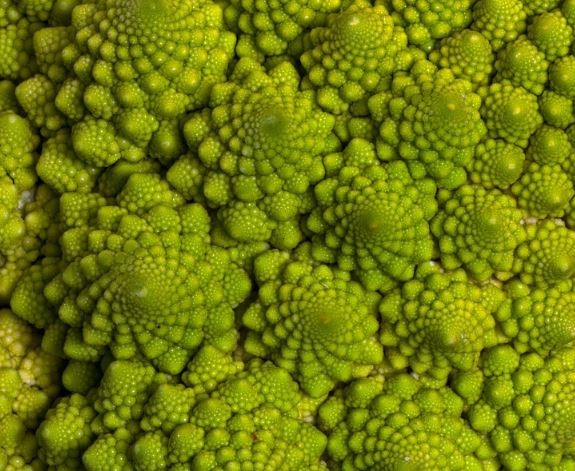
Let’s leave the math… and come back to the tips on how to grow romanescu step by step !
Complete guide to grow romanescu organically
We have already commented previously that it is not one of the best-known crops in our country but that it is gradually gaining ground.
Next, we are going to see step by step how to grow romanesco in our gardens to obtain the best results.
We must not forget that each variety will need specific care. And we must always prioritize local varieties.
We will start with the sowing, transplanting and necessary cultivation work, to continue with the fight against pests and diseases and with the keys to harvesting the romanescu.
1. The planting of romanescu
The first thing we must do is sow the romanescu seeds in the seedbeds. As you know, there are seedbeds of various forms. We can take trays with holes of 4 x 4 centimeters as a reference. In these trays we will deposit 2 seeds per hole. If both seeds succeed, the weaker of the two will be eliminated.
The planting date depends on where we are located, but a suitable date will be between July and August.
Here I leave you a photo with some ideas of homemade seedbeds that you can use.
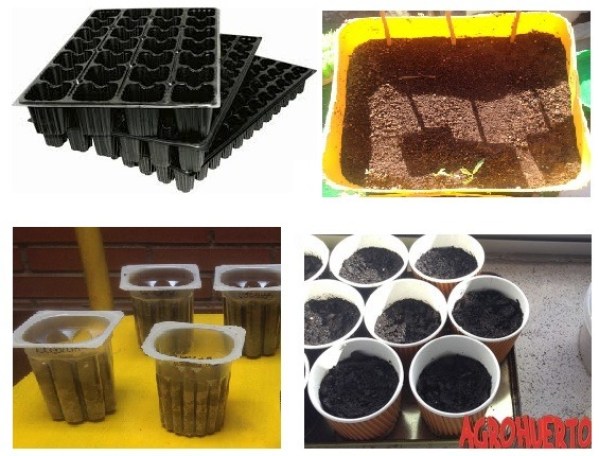
2. When to plant romanescu?
Once our romanescu seeds have gone ahead, the time to transplant them into the garden soil will be when they have between 3-5 true leaves. About a month after sowing them. Moist but well-drained soils will be the most suitable for this crop (without flooding!).
Planting distances can range from 30 to 60 centimeters, depending on the production we want to have.
3. Labors necessary to cultivate romanescu
romanescu irrigation
Drip irrigation is recommended. The approximate flow can be around 4 liters per hour, but it can vary depending on several factors: climate, state of the crop, etc.
Subscriber
It is important not to fertilize excessively since an excess of nitrogen makes our romanescus take on reddish colours.
4. Pests and diseases of the romanescu
Like other crops, Romanescu is not immune to garden pests and diseases. Among the main pests and most important diseases of romanescu, the following stand out:
Caterpillars on the leaves of the romanescu
Plant caterpillars, as we all know, love leaves. They start eating and do not stop. Among the most dangerous caterpillars for romanescus are: Wireworm or caterpillars of the genus Spodoptera or Pieris.
whitefly on leaves
One of the garden classics, the white fly, can also attack our romanescus. It is important to look closely at the underside of the leaves to detect their presence.
romanesco aphids: waxy aphid
Of all the species of aphids that exist, there is a species that especially attacks romanescos and brassicas in general. It is known as waxy aphid or « Brevicorne brassicae «. As its name suggests, the places where it is found have a sticky appearance.
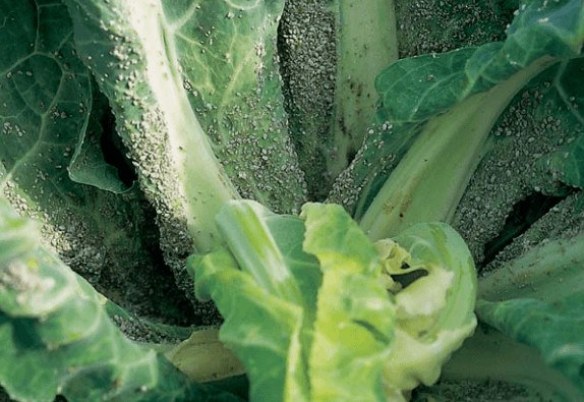
Stains on the edges of the leaves
If we find the romanescu leaves with spots on the edges, it may be because they have received excess heat.
snails and slugs
Apart from the caterpillars, if we find that the leaves of our romanescus are bitten, we must pay attention and see if there are snails or slugs nearby. They love leaves too!
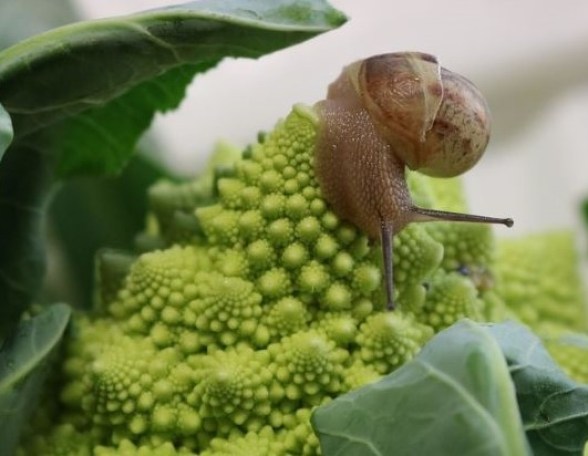
5. When to harvest romanescu?
Romanescu is harvested manually when the inflorescence reaches its maximum size. It is important to harvest romanesco before the inflorescences begin to open.
The romanescu harvest depends on the variety that we have used.
- Short or medium cycle romanescu varieties, such as Arizona, Fremont, Asterix, Durlan, will be harvested between 90 and 150 days after planting.
- Romanescu varieties with longer cycles, such as Fargo, Durlan or Mariné, will be harvested between 150 and 200 days after transplanting.
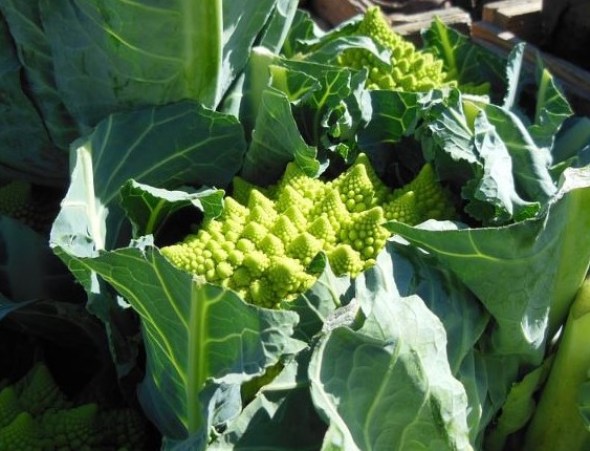
This crop is similar to others that we have already discussed on the blog. Therefore, here are some articles that may interest you:
References
- Ministry of Agriculture, Fisheries and Food. Broccoli cultivation.
- Hoyos, P., Ramos, D., La Blanca, I. (2007). Influence of Density and planting date on the production of two romanescu cultivars. Plant Production Department: Phytotechnics of the Polytechnic University of Madrid.
- Ministry of Agriculture, Fisheries and Food. Organic farming, statistics 2016.
This is all for today agrohuerters, I hope you liked the article and that you are encouraged to grow romanescu in your gardens ! Do not hesitate to comment all your experiences or doubts in the comments.
See you in the next article.
Have a nice day

![Photo of Strelitzia: [Características, Siembra, Cuidados, Riego y Sustrato]](https://www.complete-gardening.com/wp-content/uploads/2021/06/strelitzia_1586148539-390x220.png)

![Photo of Citrus Miner: [How to Identify and Fight It]](https://www.complete-gardening.com/wp-content/uploads/2022/08/citrus-miner-how-to-identify-and-fight-it-390x220.jpg)
![Photo of Planting a Mandarin: [Cultivation, Care, Pests and Diseases]](https://www.complete-gardening.com/wp-content/uploads/2022/08/planting-a-mandarin-cultivation-care-pests-and-diseases-390x220.jpg)